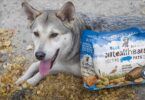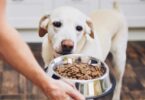Nearly 34% of pet owners admit sharing human food with their animals weekly, often without checking safety guidelines. While many foods seem harmless, some common ingredients like mayonnaise demand careful evaluation before becoming a treat.
This creamy condiment contains up to 80% fat per serving – a nutritional red flag for canines. Though not poisonous, excessive consumption may trigger vomiting, diarrhea, or pancreatitis in sensitive pets. Even small amounts could upset stomachs accustomed to balanced diets.
Dogs frequently show interest in mayonnaise due to its rich texture and savory aroma. However, responsible owners should prioritize long-term health over temporary cravings. Monitoring portion sizes becomes critical if pets accidentally consume table scraps containing this ingredient.
Veterinarians emphasize moderation and observation. Occasional licks from a sandwich rarely cause harm, but repeated exposure increases risks. Immediate professional guidance proves essential if a pet ingests large quantities or displays unusual symptoms.
This guide explores safe alternatives, portion control strategies, and warning signs every caretaker should recognize. Understanding these factors helps create informed dietary choices that support a dog’s well-being.
Understanding Mayonnaise: Ingredients and Nutritional Facts
What makes this creamy condiment problematic for pets starts with its core components. At its simplest, mayonnaise combines oil, egg yolks, and acidic elements like vinegar or lemon juice. These foundational elements create a rich emulsion that lacks essential nutrients animals need.
Key Ingredients in Mayo
Egg yolks provide structure and richness but contribute significant cholesterol. Oil forms the bulk of the mixture, packing about 11 grams of fat per tablespoon. Acidic additives like vinegar or citrus juice balance flavors but offer minimal nutritional value.
Nutritional Impact on Your Dog’s Diet
A single tablespoon contains roughly 100 calories – equivalent to 10% of a small dog’s daily needs. While tiny amounts might not cause immediate harm, frequent consumption disrupts balanced diets. High-fat content strains digestion and may lead to weight gain over time.
Compared to protein-rich treats or fiber-filled vegetables, this spread provides empty calories without vitamins or minerals. Pet owners seeking healthier options might consider plain Greek yogurt or pumpkin puree for added nutrition.
The Risks of Feeding Mayo to Your Dog
Many common kitchen staples aren’t suitable for canine consumption, despite their popularity. The creamy texture and savory taste often mask nutritional pitfalls that could affect a pet’s well-being. Understanding these hidden dangers helps owners make safer treat choices.
Gastrointestinal Upset and Fat Overload
High-fat foods like mayonnaise strain digestion. A single tablespoon contains 11 grams of fat – equivalent to 30% of a small dog’s daily limit. This overload often leads to stomach discomfort, vomiting, or diarrhea within hours.
Pancreatitis remains a critical concern. Dogs process fats less efficiently than humans, making their pancreas vulnerable to inflammation. Repeated exposure increases this risk, especially in breeds prone to digestive problems.
Sensitive pets might react to even tiny amounts. A lick from a sandwich could trigger symptoms in animals with food intolerances. Watch for lethargy, loss of appetite, or abdominal pain after accidental ingestion.
While not toxic, frequent consumption creates long-term health issues. Owners should prioritize low-fat alternatives and consult veterinarians if unusual symptoms persist. Early intervention prevents minor problems from becoming emergencies.
Can Dogs Eat Mayo? Knowing Safe Consumption Levels
Determining safe limits for human foods requires careful consideration of portion sizes and individual health factors. A tiny taste or accidental lick typically poses minimal risk, but regular exposure to even small quantities can accumulate problematic fat levels over time.
Determining the Right Amount
Monitor accidental ingestion by checking food packaging labels for serving sizes. A teaspoon (5 grams) or less rarely causes issues for medium-sized animals. For smaller breeds, half this amount warrants closer observation.
Keep countertops clean and secure trash cans to prevent scavenging. Use measuring spoons if intentionally incorporating similar toppings into meals, though most vets recommend avoiding fatty additives altogether.
When to Contact Your Veterinarian
Seek professional advice if a pet consumes more than one tablespoon (15 grams). Watch for symptoms like repeated vomiting, diarrhea lasting over 12 hours, or unusual lethargy. These signs may indicate pancreatitis or digestive distress requiring intervention.
Maintain a balanced dog diet by reserving fatty treats for rare occasions. Always provide fresh water after accidental consumption to aid digestion. Immediate vet consultation becomes crucial if symptoms escalate or persist beyond a day.
Exploring Healthier Alternatives for Your Dog’s Diet
Pet owners seeking nutritious additions to their companion’s meals have multiple options that support wellness. Swapping high-fat condiments for nutrient-dense alternatives helps maintain energy levels and digestive health. These substitutions provide essential vitamins while minimizing risks associated with rich foods.
Low-Fat Options: Greek Yogurt and Cottage Cheese
Plain Greek yogurt offers a creamy texture with 90% less fat than mayonnaise. A single tablespoon contains 2 grams of protein and live probiotics that aid gut health. Low-fat cottage cheese provides calcium and B vitamins without excessive calories.
Both options deliver nutritional benefits while reducing the risk of obesity. Always choose unsweetened varieties to avoid added sugar. Introduce these foods gradually to monitor tolerance.
Other Nutritious Toppings for Canine Meals
Steamed vegetables like carrots or green beans add crunch and fiber. Pumpkin puree supports digestion with natural enzymes. For protein-packed treats, consider small bits of boiled chicken or salmon.
Fresh blueberries and apple slices (seedless) provide antioxidants. Avoid seasoning or sauces to keep sodium and sugar levels low. These choices promote balanced nutrition for safe dogs without compromising taste.
Consult your veterinarian before making dietary changes. They can recommend portion sizes tailored to your canine’s age, weight, and activity level. Simple swaps create lasting health benefits over time.
Practical Tips for Preventing Accidental Ingestion
Preventing access to risky foods requires proactive household management. Over 60% of veterinary visits involve pets consuming improperly stored items. Secure storage solutions and mindful habits reduce exposure to harmful substances.
Smart Storage Solutions
Keep condiments in high cabinets with childproof latches. Flavored varieties often contain garlic or onion powder – ingredients linked to blood cell damage in toxic dogs. Never leave sandwich spreads unattended during meal prep.
Use airtight containers for leftovers instead of foil or plastic wrap. Xylitol-sweetened products like sugar-free desserts demand extra caution. Store these in locked pantries since even small amounts can cause liver failure.
Creating Safe Zones
Designate pet-free areas during cooking and dining. Install baby gates to block kitchen access when unsupervised. Clean counters immediately after preparing meals containing risky ingredients.
Dispose of food wrappers in sealed trash bins. Scavenging behaviors often lead to inflammation pancreas cases. Regular sweeps for fallen crumbs prevent midnight snack raids.
Educate family members about dangerous foods. Post a fridge list highlighting items like chocolate, grapes, and xylitol-containing products. Consistent practices protect curious companions from dietary issues.
Recognizing Signs of Distress and When to Act
Spotting early warning signs after dietary mishaps can prevent minor issues from escalating. Physical reactions vary depending on the amount consumed and a pet’s sensitivity. Observant owners should watch for changes in behavior or appetite following accidental ingestion.
Identifying Symptoms Like Vomiting and Diarrhea
Common indicators of digestive upset include repeated vomiting or loose stools. These symptoms often appear within 4-12 hours. Lethargy or reluctance to play may signal discomfort.
Persistent diarrhea risks dehydration, especially in smaller animals. Blood in vomit or stool requires urgent attention. Rapid breathing or pale gums could indicate systemic distress.
Immediate Steps and Veterinary Advice
Remove food for 6-8 hours to let the stomach settle. Provide small amounts of water to prevent dehydration. Avoid home remedies without professional guidance.
Contact a veterinarian if symptoms last over 12 hours or worsen. Share details about the quantity consumed and timing. For severe cases, vet poison control services offer 24/7 support.
Timely intervention reduces the risk of complications like pancreatitis. Always err on the side of caution – a quick call to your vet provides clarity during emergencies.
Wrapping Up: Ensuring a Healthy and Balanced Dog Diet
Prioritizing nutritional balance helps pets thrive while minimizing diet-related risks. While tiny amounts of condiments like mayo rarely cause emergencies, consistent focus on wholesome meals prevents issues like pancreatitis and obesity. High-fat additives offer no nutritional benefits compared to protein-rich alternatives.
Plain Greek yogurt or steamed vegetables provide safer texture variety without excessive fats. These options support digestion and maintain healthy weight levels in canines. Occasional accidental ingestion requires monitoring but shouldn’t create panic if handled properly.
Pet owners should maintain secure food storage and recognize early distress signals. Regular vet consultations help tailor diets to individual needs, ensuring long-term vitality. Balanced nutrition remains the cornerstone of proactive pet care, safeguarding against preventable health problems.
FAQ
Is mayonnaise toxic to pets?
While not inherently poisonous, most commercial brands contain high fat, salt, and additives like garlic or xylitol (in low-fat varieties) that pose health risks. Regular consumption may lead to pancreatitis or obesity.
What symptoms indicate a bad reaction to mayo?
Watch for vomiting, diarrhea, lethargy, or abdominal pain. Severe cases might involve dehydration, rapid breathing, or collapse—signs requiring immediate veterinary care.
Are eggs in mayo safe for canines?
Plain cooked eggs are generally safe, but raw eggs in homemade recipes carry salmonella risks. Commercial products often include preservatives unsuitable for pets.










Leave a Comment